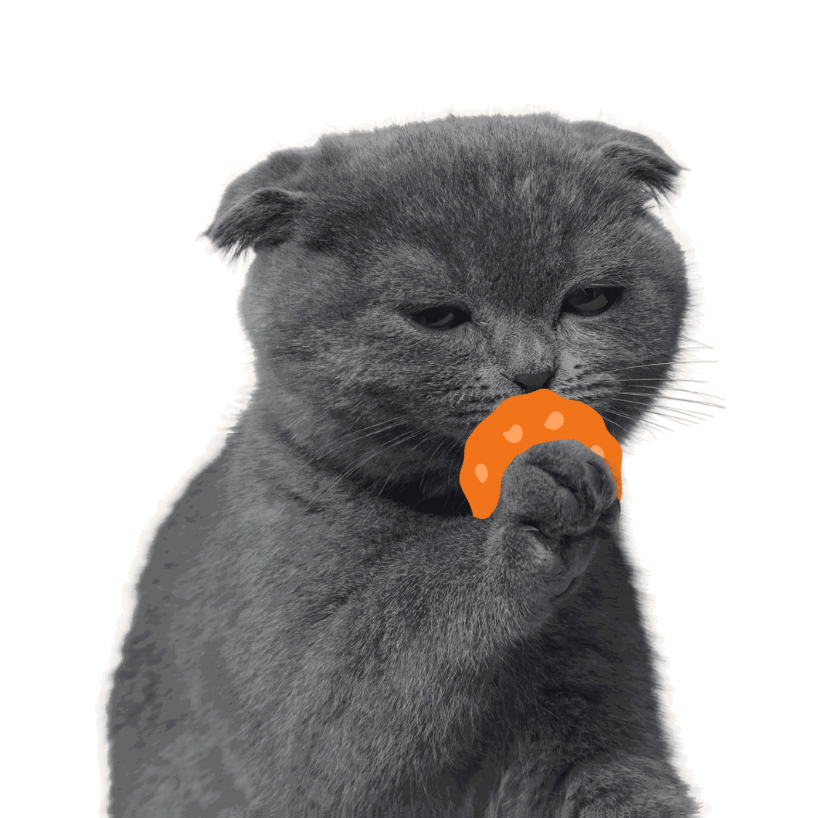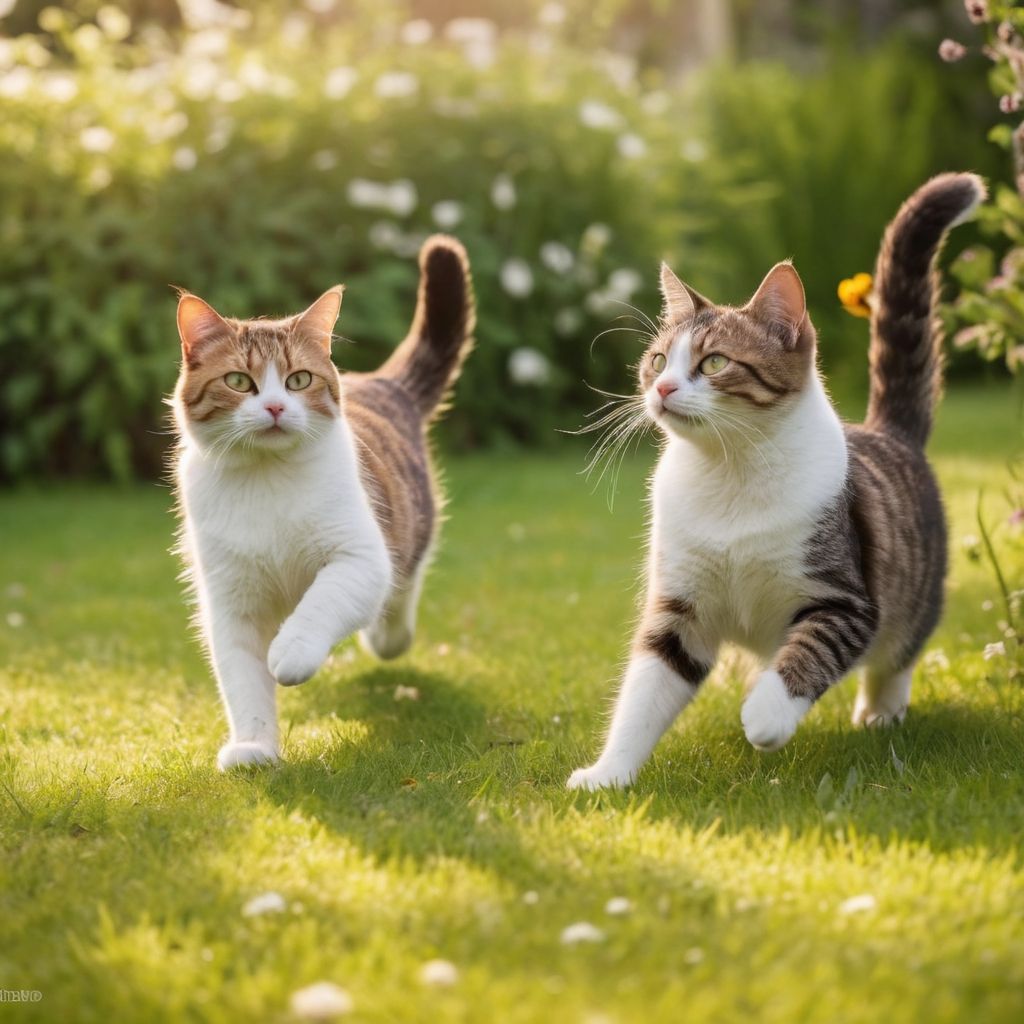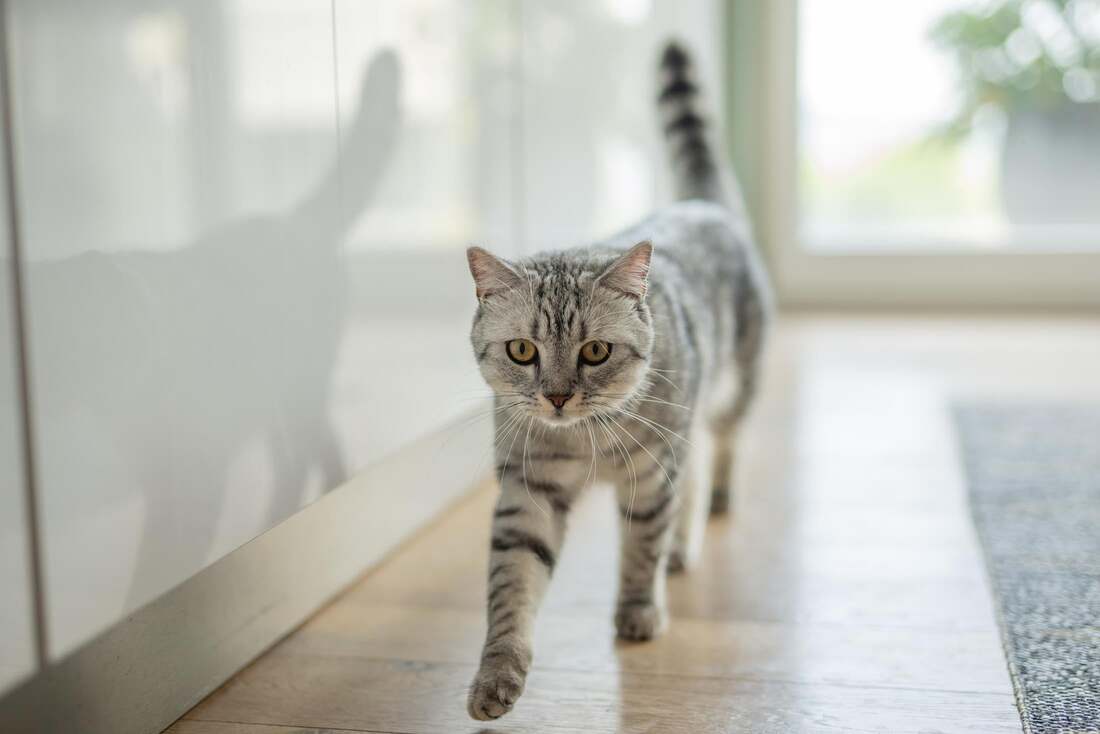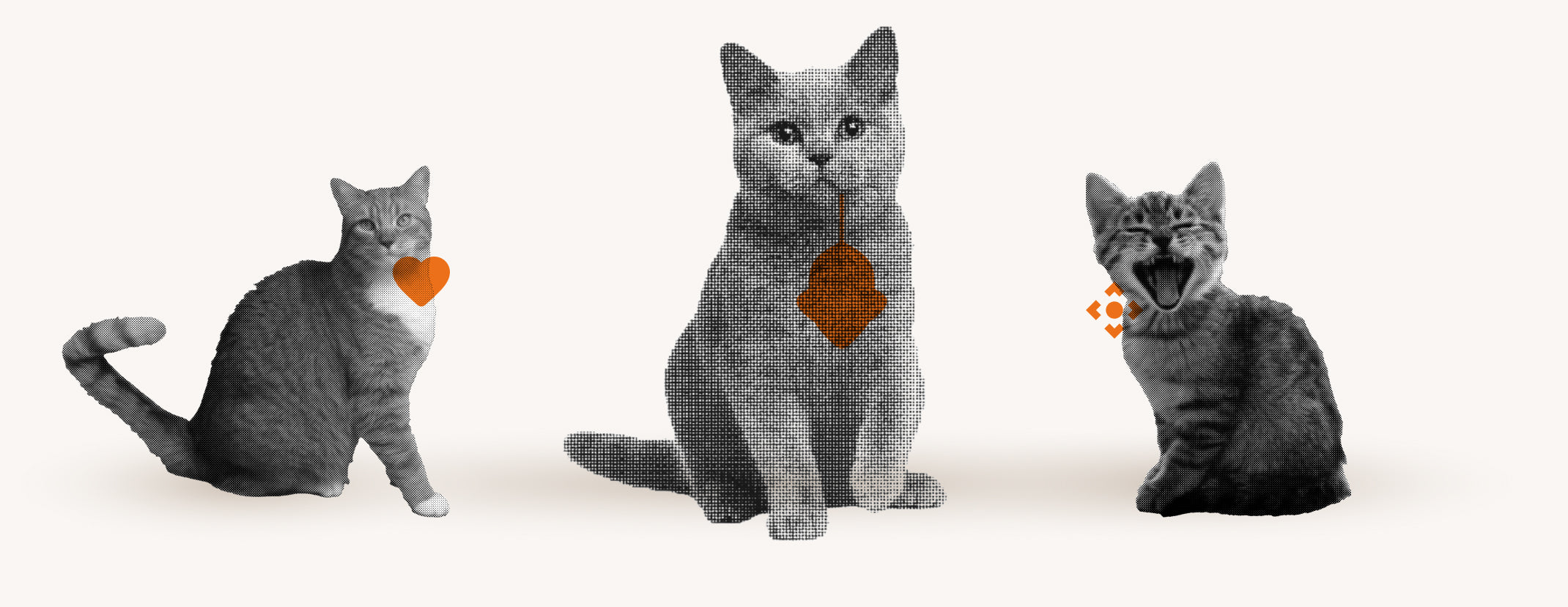Have you ever wondered if your cats are really fighting or just playing?
It can be difficult to tell the differences, especially when interactions are intense.
Often your cat's behavior lies somewhere between friendly play and serious fighting.
In this blog post, you'll learn how to distinguish playful behavior from serious fights, and get tips on when and how to intervene.
Characteristics of playful behavior in cats

Cats display a variety of behaviors during play that can often be misunderstood. Playful behavior is usually characterized by a gentle, boisterous nature that does not pose a serious threat. Watch how your cats interact with each other: they might chase each other, lightly hit each other with their paws, or face each other in a playful "fighting pose" without causing any serious harm.
Some specific signs can help you recognize playful behavior:
- The cats hardly make any noise : During play, cats are often relatively quiet, and the only sound might be the soft tapping of their paws.
- Changing roles : Pay attention to whether the roles change during the game – sometimes one cat is the hunter, sometimes the other.
- Posture and facial expression : Playful cats often have a relaxed facial expression and a non-rigid posture.
It's also important to observe how the game ends. In most cases, a game between cats will end peacefully, with them simply moving away from each other or even resting together. If you notice that the game ends without any signs of stress or anxiety, this is a good sign that it is healthy play behavior.
The Role of Body Language in Cat Play Behavior

Body language plays a crucial role in understanding cat play behavior. Cats communicate their intentions and emotions strongly through their body posture, ear position, and tail movements. For example, a playful kitten might have a raised tail that trembles slightly, signaling excitement and playfulness. The ears are usually pointed forward, showing interest and engagement.
Body language can also indicate when a game is getting too serious. If the ears are flat against the head, the pupils are dilated and the fur is standing on end, this could be a sign that the mood is changing. Cat owners should quickly recognize these signs in order to be able to intervene if necessary before the situation escalates.
How do you recognize serious fights in cats?
When cats are fighting seriously, their body language changes noticeably. One important sign is when they start to growl or hiss intensely. These sounds are a clear indicator that the game has become serious. In addition, the cats' fur can become bushy, which is also a sign of aggression.
The physical actions during a fight are often more aggressive and dangerous than during play. Behaviors that indicate a serious fight include:
- Extended claws
- Staring at the opponent with a fixed gaze
- Beating with the paw, often aimed at the head or sensitive areas
It is essential to recognize the situation quickly and intervene if necessary to avoid injury. If you notice that your cats' posture is stiff and tense and they are not taking turns or taking breaks, this could be a serious fight. In such cases, it is advisable to carefully separate the cats to prevent further escalation.
When should cat owners intervene?
It is important to know when you as a cat owner should intervene to avoid possible injury or long-term stress to your cats. A clear indication that intervention is needed is persistent hissing and growling during an argument. Other signs that require immediate intervention include:
- Extended claws
- Aggressive paw striking
- Persistent staring and physical contact without breaks
If you notice this kind of behavior in your cats, it is advisable to intervene quickly and calmly to defuse the situation. One method is to redirect the cats' attention to something else, such as a toy. It is important to remain calm and not make any hectic movements that could cause the cats additional stress. Remember that your goal is to calm the situation, not to worry the animals even more.
Development of Play Behavior in Cats

Cats' play behavior develops over the course of their lives and is closely linked to their developmental phases. Young cats, often referred to as velvet paws , show a particularly high level of play instinct. They use play to sharpen their motor skills and instincts. This is an important time in which they learn to explore their environment and build social bonds. The following points are typical of the play behavior of younger cats:
- Lively hunting and catching of objects
- Playful fighting with siblings or other young cats
- Exploring new stimuli and environments through playful curiosity
As cats get older, their play behavior changes. Adult cats are often more selective about their play times and partners, and play no longer serves solely for development but also for entertainment and stress relief. In older cats, play behavior can be influenced by health problems, resulting in quieter and less intense play. Here are some aspects that characterize the play behavior of adult and older cats:
- Preference for certain toys or types of games based on previous experiences
- Shorter and less energetic game phases
- Adaptation of the game to physical and health conditions
Toys as a means of promoting healthy play behavior

Toys play a key role in encouraging healthy play behavior in cats. By choosing carefully selected toys, you can ensure that your cat can exercise its natural instincts in a safe and controlled way. This helps to avoid serious fights by keeping the cat occupied and channeling its energy in a positive direction.
Here are some types of toys that are particularly useful:
- Interactive toy : Promotes mental stimulation and physical activity.
- Toys that encourage hunting : Such as small balls or toys that move unpredictably to stimulate the hunting instinct.
- Chew toys : Helps encourage chewing, which in turn keeps gums healthy.
These toys help keep your cat active and engaged while exploring their world in a playful and safe way.
Humans as interactive playmates for cats

Cats love spending time with their humans, especially when it comes to playing and having fun. As a cat owner, you have the wonderful opportunity to not just be a spectator, but an active participant in your cat's play. By taking an active part, you strengthen the bond and ensure a happy and well-balanced cat.
Here are a few simple ways you can interact with your cat:
- Use toys like feathers on sticks to stimulate their hunting instincts.
- Build small obstacle courses with pillows or boxes for your cat to explore.
- Give your cat the opportunity to "chase" you by dragging a string behind you. Such games help encourage your cat's natural instincts in a safe and controlled environment.
Frequently Asked Questions
How do I know if cats are playing or fighting?
You can tell if cats are playing or fighting by observing their body language, sounds, and behavior. If they are quiet, switch roles during play, and have a relaxed facial expression, they are probably playing. Signs of serious fighting include intense growling, hissing, extended claws, and purposeful paw thrashing.
How can you tell if your cat is fighting or playing?
You can tell if a cat is fighting or playing by paying attention to signs such as noise, body posture and behavior. Playing is often characterized by quiet behavior, role-switching and relaxed body posture. Fighting, on the other hand, is indicated by loud growling, hissing, stiff posture and aggressive behavior such as extended claws and targeted lashing.
Should you intervene when cats fight?
Yes, you should intervene when cats are fighting, especially if you notice persistent hissing and growling, extended claws, aggressive hitting, and sustained physical contact without breaks. It's important to intervene quickly and calmly to defuse the situation and avoid potential injury or long-term stress.





Share:
Cat brings injured mouse: What should the owner do?
Make your own scratching toy for cats: A guide